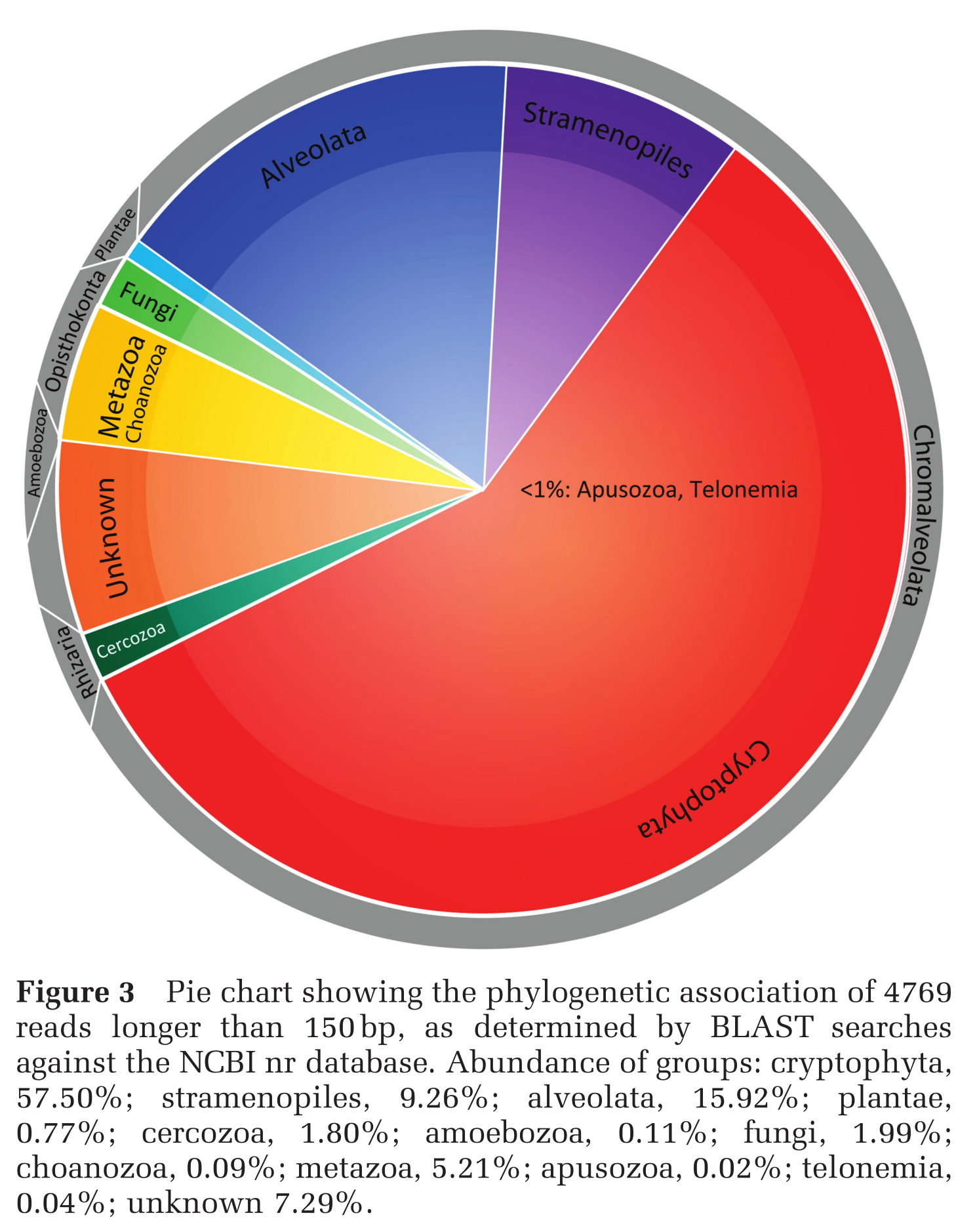Freshwater Perkinsea and marine-freshwater colonizations revealed by pyrosequencing and phylogeny of environmental rDNA
Bråte, J., Logares, R., Berney, C., Ree, D. K., Klaveness, D., Jakobsen, K. S. and Shalchian-Tabrizi, K. 2010. ISME Journal. 4:1144–1153. doi:10.1038/ismej.2010.39



Abstract
Protist parasites are ecologically important, as they can have great impact on host population dynamics and functioning of entire ecosystems. Nevertheless, little is known about their prevalence in aquatic habitats. Here, we investigate the diversity and distributional patterns of the protist parasites Perkinsus and Parvilucifera (Perkinsea). Our approach included 454 pyrosequencing of the 18S rDNA gene obtained from a high-altitude lake (Lake Finsevatn, Norway) and phylogenetic analyses of all publicly available sequences related to Perkinsea. The applied PCR primers target a 450bp region that encompass the variable V4 region of the 18S rDNA gene and have been optimized for the Titanium upgrade of the 454 technology. Nearly 5000 sequences longer than 150 bp were recovered from nearly all eukaryotic supergroups, and of those, 13 unique sequences were affiliated to Perkinsea. Thus, our new strategy for 454 amplicon sequencing was able to recover a large diversity of distantly related eukaryotes and previously unknown species of Perkinsea. In addition, we identified 40 Perkinsea sequences in GenBank generated by other recent diversity surveys. Importantly, phylogenetic analyses of these sequences identified 17 habitat-specific marine and freshwater clades (PERK 1-17). Hence, only a few successful transitions between these habitats have taken place over the entire history of Perkinsea, suggesting that the boundary between marine and fresh waters may constitute a barrier to cross-colonizations for intracellular parasites.